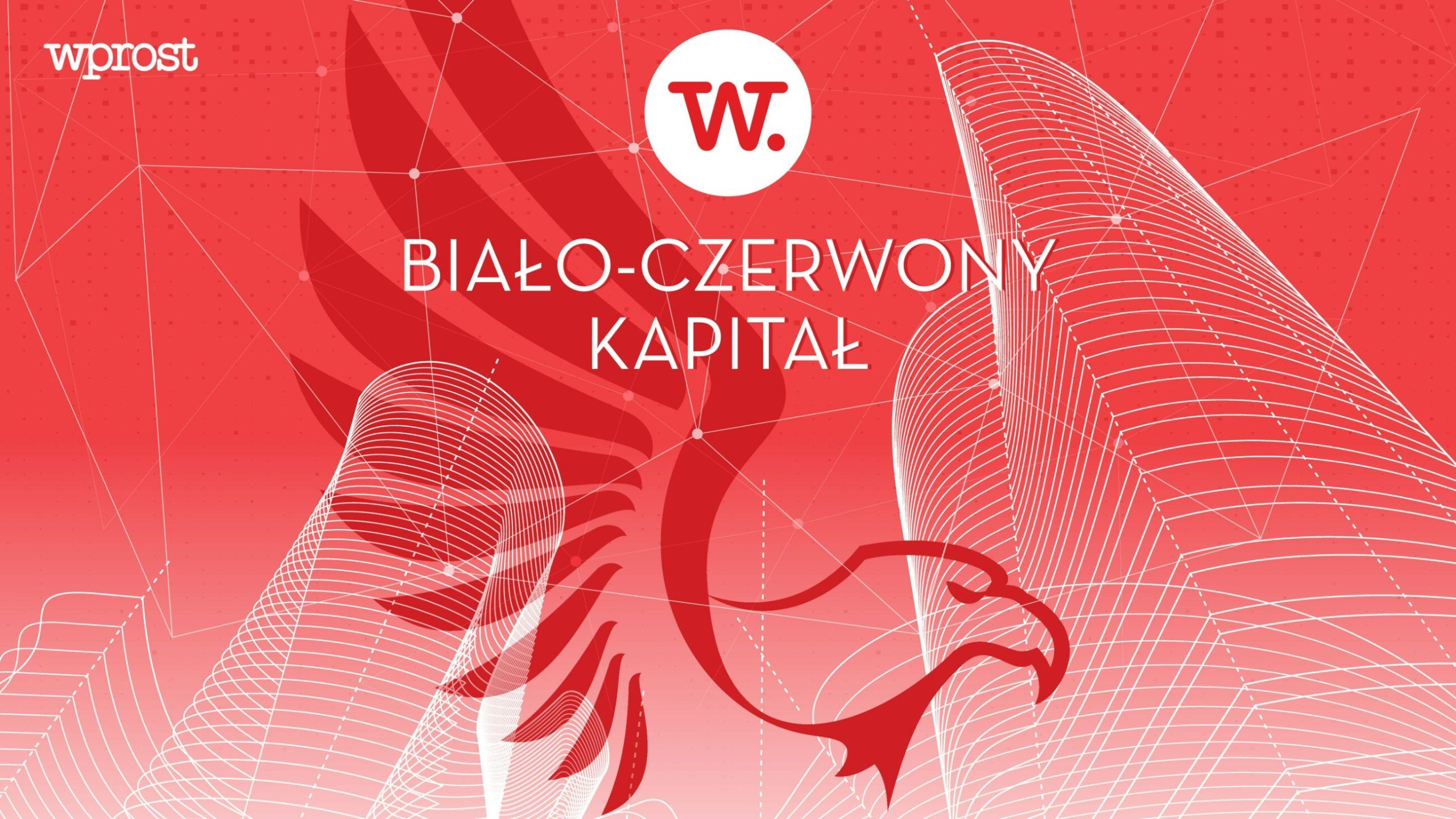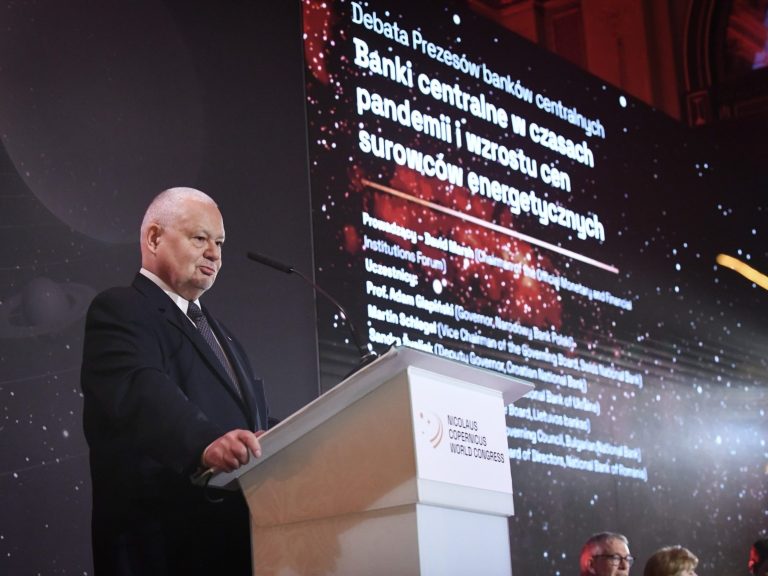White and red capital. Large enterprises are the backbone of economic development

Although large enterprises (employing over 250 people) constitute only 0.2% of companies operating in Poland, they play a key role from the point of view of the economy and the state budget. They employ the most people, pay the highest taxes, invest the most, and have the largest share in Polish exports and foreign expansion.
According to the ranking of “200 largest companies in Poland”, prepared by the editorial office of “Wprost”, enterprises with Polish capital achieved revenues of PLN 1.3 trillion in 2022, i.e. PLN 300 billion more than last year. This is an impressive result considering the global energy crisis and the war taking place on our eastern border.
The highest revenues in 2022 (nearly PLN 277 billion) were achieved by the Orlen Group, which also included revenues generated by Lotos and PGNiG, which Orlen incorporated into its structures last year, creating a multi-energy concern. Second place on the list was taken by Polska Grupa Energetyczna (PLN 73.435 billion), and third place was taken by Totalizator Sportowy SA, whose revenues amounted to PLN 39 billion. The next positions in the top ten were: Tauron, Cinkciarz.pl, and then KGHM Polska Miedź, Enea, PKO BP, Grupa Azoty and PZU.
It is impossible not to notice that all these companies, apart from Cinkciarz, are enterprises in which the State Treasury has shares. And although economists have been discussing for years how much the state should be in business, it cannot be denied that most companies controlled by the State Treasury have recorded an increase in market value.
The largest increases – according to data from the Ministry of State Assets – were recorded by: Orlen (+PLN 24.1 billion, +55.1%), Tauron (+PLN 3.0 billion, +91.4%), KGHM (+ PLN 3.4 billion, +17.8%), Alior Bank (+PLN 2.8 billion, +72.0%), JSW (+PLN 2.8 billion, +116.2%).
The big ones invest more
The increase in value is, among others, the result of investment strategies implemented by state-owned entities since 2016. Companies that are key from the point of view of the Polish economy invested PLN 45.2 billion in 2022 alone. “Such a situation is possible, among others, thanks to the fact that these entities are not drained of their profits by the State Treasury through the payment of high dividends,” we read in the report entitled “The importance of State Treasury companies for Poland. Why you shouldn’t sell them.”
The publication shows that in 2022 alone, the investment outlays of 196 selected state-owned companies amounted to PLN 45.2 billion, and from 2016 to July 2023 they amounted to PLN 285.3 billion and were higher by PLN 84.5 billion compared to the years 2008-2015.
This is important because in recent years we have observed a slowdown in investments in the private sector, which is, among others, the result of entrepreneurs’ concerns about the stability of law, deterioration of relations with the European Union and, above all, increase in operating costs. Investments contribute to increasing productivity, creating jobs, improving competitiveness and, consequently, increasing Poland’s GDP.
Expenditures on innovation are of particular importance for the development of the economy. According to the Central Statistical Office, in 2020, internal expenditure on research and development in large enterprises amounted to PLN 13.6 billion, compared to PLN 3.9 billion in medium-sized enterprises, PLN 2.1 billion in small enterprises and PLN 0.7 billion in micro enterprises. The above data indicate that although SMEs can benefit from various types of funds and reliefs for research and development, it is large enterprises that are most dependent on progress in the technological revolution. The rankings of the most innovative companies operating in Poland include, among others: PKO BP, Blik, AstraZeneca, Pfizer, Synthos, InPost and the Orlen Group, which plans to allocate approximately PLN 120 billion to the development of green technologies in its strategy. Only until 2030, the company will spend approximately PLN 3 billion on research, development and innovation.
Taxes and employment
Large enterprises also pay the most funds to the state budget in taxes. Data from the Ministry of Finance, which annually publishes a list of CIT taxpayers with revenues exceeding the equivalent of PLN 50 million, show that in 2022 Orlen paid the most, contributing almost PLN 4.4 billion to the state coffers with income tax. In second place was Jastrzębska Spółka Węglowa – PLN 1,345 million, and in third place was Grupa Lotos (PLN 1,131 million), which became part of the Orlen Group during the year.
Orlen’s result can be further increased by almost half a billion CIT from Energa and PLN 330 million from Polish Oil and Gas Mining. The next places were taken by: PGE Górnictwo i Energetyka Nowoczesna (PLN 1 billion), Santander Bank Polska (PLN 957 million), Jeronimo Martins Polska (PLN 803 million), Bank Polska Kasa Dobrze SA (PLN 636 million), LG Energy Solution Wrocław (PLN 505 million), Bank Gospodarstwa Krajowego (PLN 499 million). The top ten is closed by Allianz Życie Insurance Company (PLN 472 million).
Companies employing more than 250 people also have a key impact on the labor market. Not only are they the largest employers, but many of them offer better wage and non-wage conditions than small and medium-sized companies.
The rule is, for example, that in addition to remuneration, they offer additional insurance, medical subscriptions or holiday subsidies. Most of them also strictly comply with labor law – large companies do not employ junk contracts. They also managed to eliminate the so-called principles of wild capitalism. In recent years, companies such as BMW, Michelin, Drutex, Ceramika Paradyż, Unibep, AstraZeneca, Polpharma, Grupa Azoty and Orlen Group have appeared in the rankings of the best employers.
As of December 31, 2022, large entities were the workplace for 60.2 percent. total working population, and their salaries were approximately PLN 1,000 higher than in SMEs (the average salary in the enterprise sector in September this year was PLN 7,379.88 gross).
Foreign expansion
And finally, export, one of the engines of the Polish economy. Data from both NBP and, among others, PARP show that foreign trade is the domain of large companies. When broken down into enterprise size classes, large entities scored 74.1%. total revenues from export sales, medium-sized entities – 19.3 percent, and small entities – 6.6 percent. The top five Polish exporters are: PKN Orlen, KGHM Polska Miedź, Volkswagen Poznań, PGNiG and Asseco Poland. Apart from PGNiG, the share of exports in the total sales of these entities ranges from 75 to 96 percent. Orlen recorded 55.5 percent. increase in export sales, and KGHM – nearly 27 percent
The number of companies that take over companies abroad is also growing. At the turn of 2021 and 2022, PFR experts are preparing a report entitled: “Polish foreign investments: new trends and directions” conducted a study in which 240 Polish large and medium-sized enterprises took part, in which they were asked, among others: about investment plans. It turned out that as many as 59.3 percent companies that already operate abroad plan to further expand their foreign operations either through new investments (45.5%) or through mergers and acquisitions (13.8%).
Almost half of companies indicate geographical diversification and risk reduction as the main benefits of direct investments abroad. Medium-sized companies tend to target Central and Eastern Europe, while large companies target Europe, Asia and North America.






